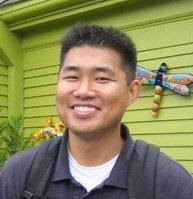[Morning Bloom]
- Shot at F2.8 with a 24-70mm. To do this right, I should have used a macro lens.
Recently purchased a little cactus. I like my plants the way I like most things in my life: no frills. A cactus is the perfect low maintenance plant. It only needs to be watered once a month. In fact, if you give it too much attention, you could wind up killing it. There is some relationship advice buried in there, but I don't feel like expounding or digging.
Despite my lack of interest in maintaining my new plant, I do get a fair amount of entertainment watching the flowers on my little cactus open up to the sun's rays each morning. The petals are only open for a few hours and then shut tightly again, seemingly designed to deny the daily displays of exuberance to those who miss the small window. Its beauty is for those who either get lucky or carefully and diligently chase it.
I am drawn to things that appear to be ironies. Why? Because those things that deviate from the ordinary and common logic make life worth observing. In the gap between the way things should be and reality lies an opportunity to explore and tell a story.
[the Edge]
I woke up before the sun during a short trip to St. Croix. While getting ripped up by mosquitoes, I walked along the rocky shore and took photographs. I remember being moved by this one plant living very close to the ocean. To me, it represents resilience. A plant is not supposed to be able to take root in rock, especially so close to the unfavorable salt levels of the ocean. Despite regularly crashing waves that threaten its existence, this plant was stubbornly refusing to die and even defiantly showed off a few yellow flowers. I was moved then, and I am still inspired now.
While there is no inherent glory in the struggle, there is beauty in survival.










